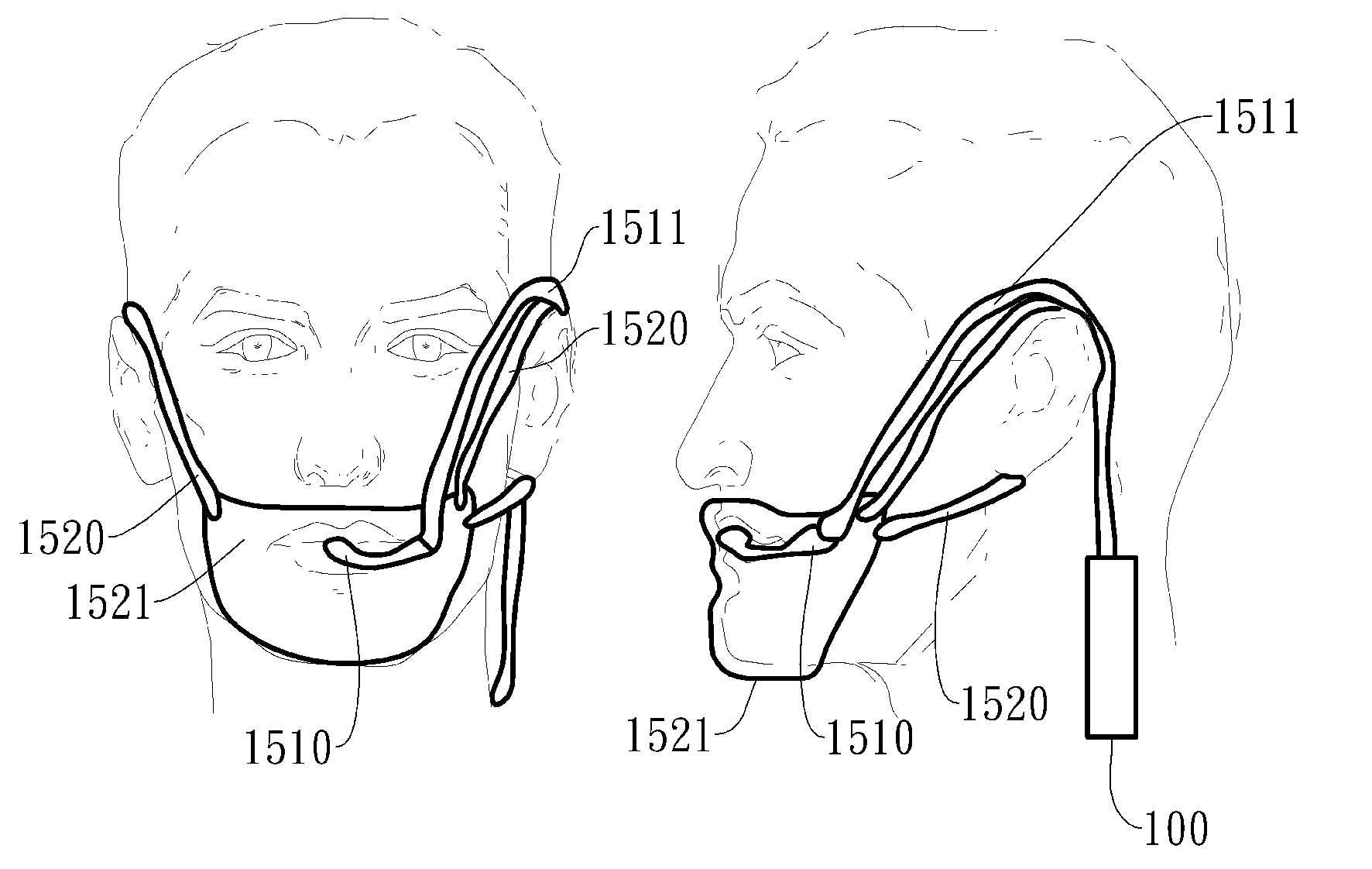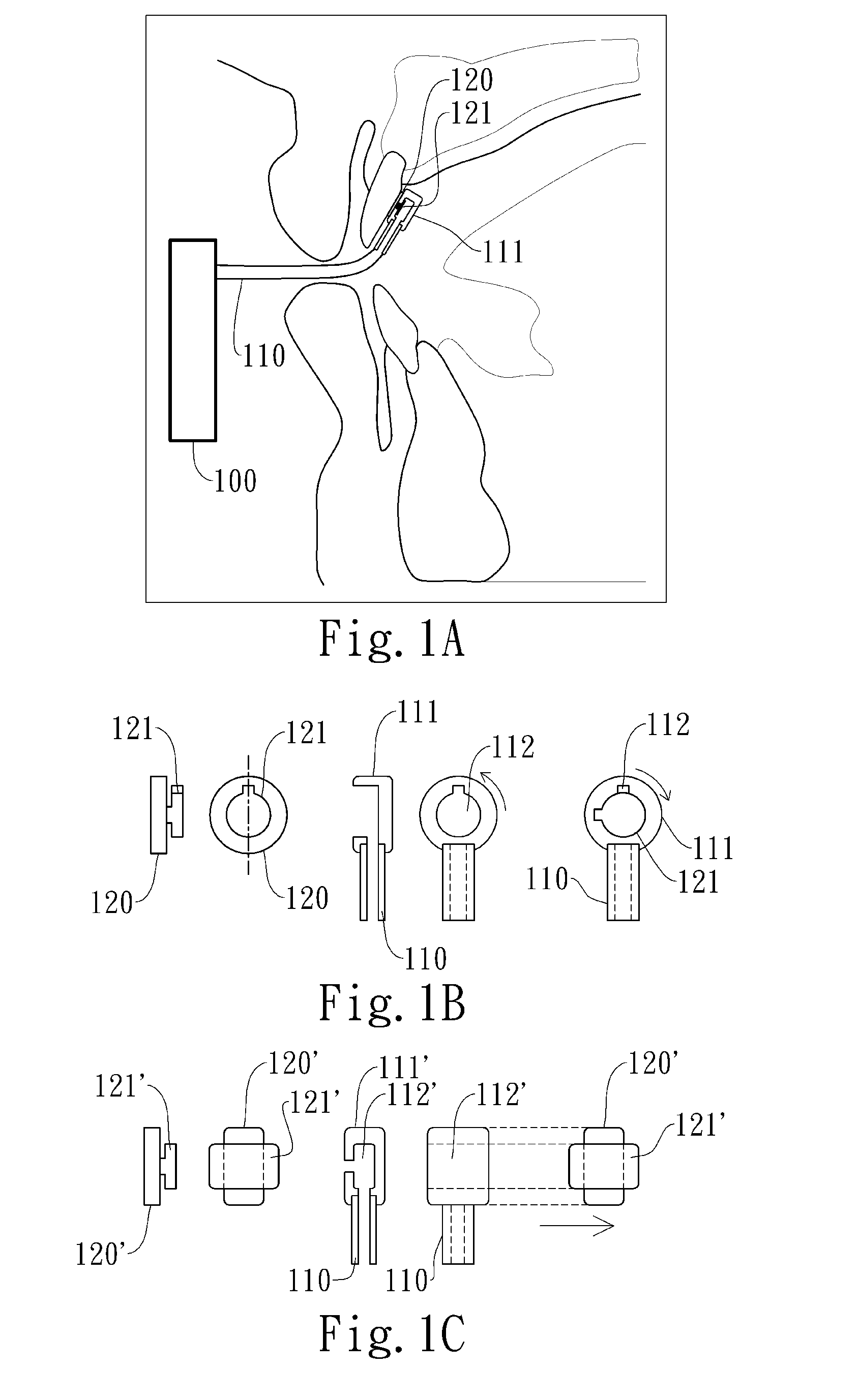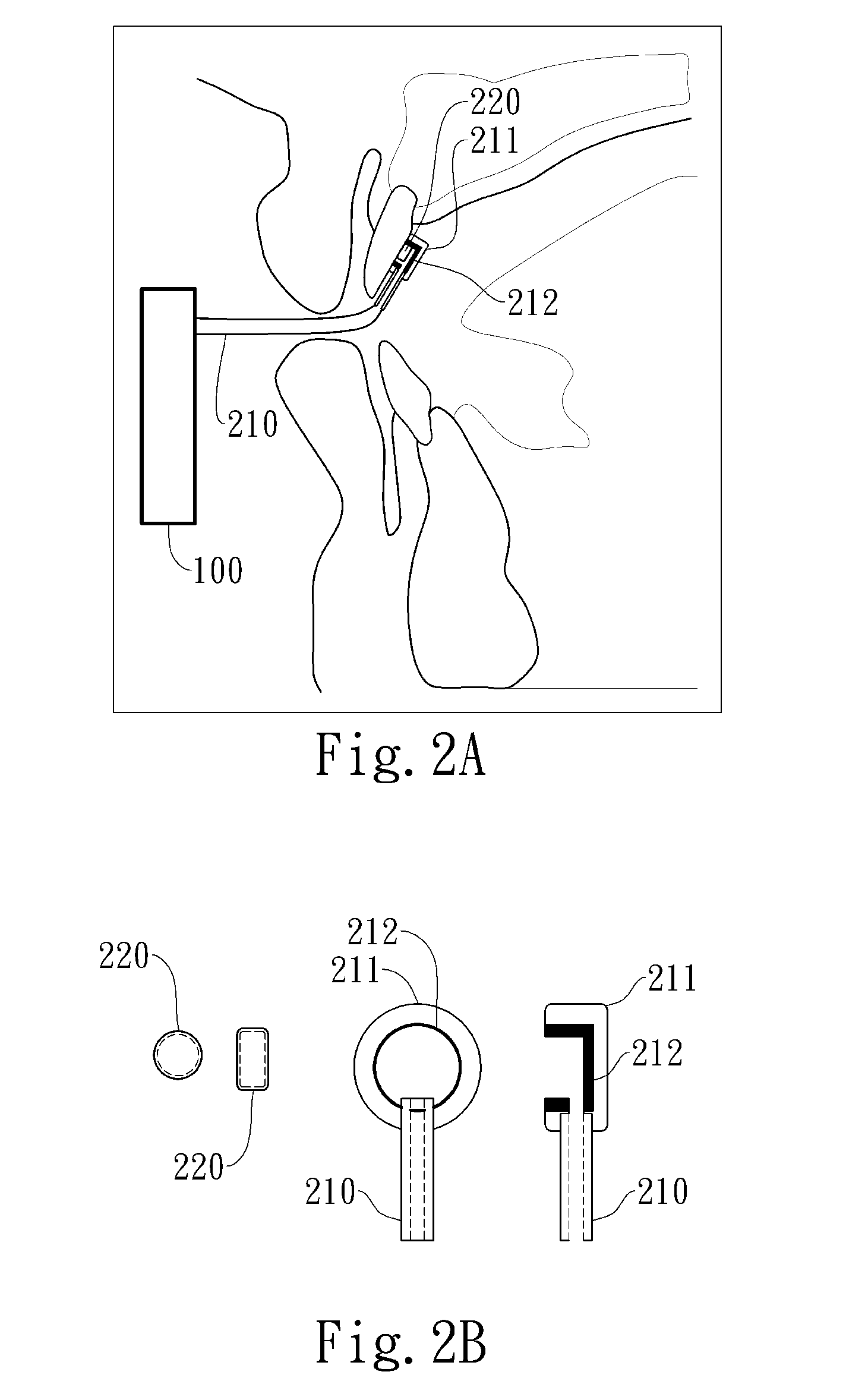Negative pressure oral apparatus
a technology of oral apparatus and negative pressure, which is applied in the field of oral apparatus, can solve the problems of reduced muscle tone in the upper airway, airway collapse, and people with moderate to severe osa, and achieves the effects of reducing blood pressure, poor concentration, and fatigu
- Summary
- Abstract
- Description
- Claims
- Application Information
AI Technical Summary
Benefits of technology
Problems solved by technology
Method used
Image
Examples
first embodiment
[0044]FIG. 1A is a cross-section view of a negative pressure oral apparatus according to the present invention. The negative pressure oral apparatus comprises a fluid conduit 110, a fixation par which is a tooth pairing part 120, and a conduit pairing part 111 near the end of the fluid conduit 110. The tooth paring part 120 can be attached to the surface of teeth by gluing or bonding permanently or temporarily. The tooth pairing part 120 has a pairing structure 121 which can be physically connected and disconnected with the conduit paring part 111. Once the tooth paring part 120 and conduit pairing part 111 are physically connected, a negative pressure source 100 can draw air out of oral cavity and thus produce a negative pressure environment to pull the tongue, soft palate and other soft tissue forward to maintain the airway patency.
[0045]The tooth pairing part 120 and the pairing structure 121 of the conduit pairing part 111 can be of any shapes that are complementary to each othe...
second embodiment
[0047]FIG. 2A is a cross-section view of a negative pressure oral apparatus according to the present invention. The negative pressure oral apparatus comprises a fluid conduit 210, a fixation part which is a tooth pairing part 220, and a conduit pairing part 211 near the end of the fluid conduit 210. The tooth paring part 220 can be attached to the surface of teeth by gluing or bonding permanently or temporarily. The tooth pairing part 220 may be a magnetic or paramagnetic part. The conduit pairing part 211 has a pairing structure 212 which can magnetically attach to the tooth paring part 220. Once the tooth paring part 220 and conduit pairing part 211 are physically connected, a negative pressure source 100 can draw air out of oral cavity and thus produce a negative pressure environment to pull the tongue, soft palate and other soft tissue forward to maintain the airway patency.
[0048]As shown in FIG. 2B, the pairing structure 212 is a disk-like paramagnetic or magnetic part with a c...
third embodiment
[0049]FIG. 3A is a cross-section view of a negative pressure oral apparatus according to the present invention. The negative pressure oral apparatus comprises a fluid conduit 310, a first fixation part which is a first tooth pairing part 320, and a first conduit pairing part 311 near the end of the fluid conduit 310. The negative pressure oral apparatus also has a second fixation part which is a second tooth pairing part 322 and a second conduit pairing part 312 near the end of the fluid conduit 310 opposite to the first conduit pairing part 311. The first and second tooth paring parts, 320 and 322, can be attached to the surface of upper or lower teeth by gluing or bonding permanently or temporarily. The first and second tooth pairing parts, 320 and 322, can be mechanically and magnetically connected and disconnected with the first and second conduit paring parts, 311 and 312. The first and second tooth pairing parts, 320 and 322, can prevent the present negative pressure oral appa...
PUM
 Login to View More
Login to View More Abstract
Description
Claims
Application Information
 Login to View More
Login to View More - R&D
- Intellectual Property
- Life Sciences
- Materials
- Tech Scout
- Unparalleled Data Quality
- Higher Quality Content
- 60% Fewer Hallucinations
Browse by: Latest US Patents, China's latest patents, Technical Efficacy Thesaurus, Application Domain, Technology Topic, Popular Technical Reports.
© 2025 PatSnap. All rights reserved.Legal|Privacy policy|Modern Slavery Act Transparency Statement|Sitemap|About US| Contact US: help@patsnap.com



